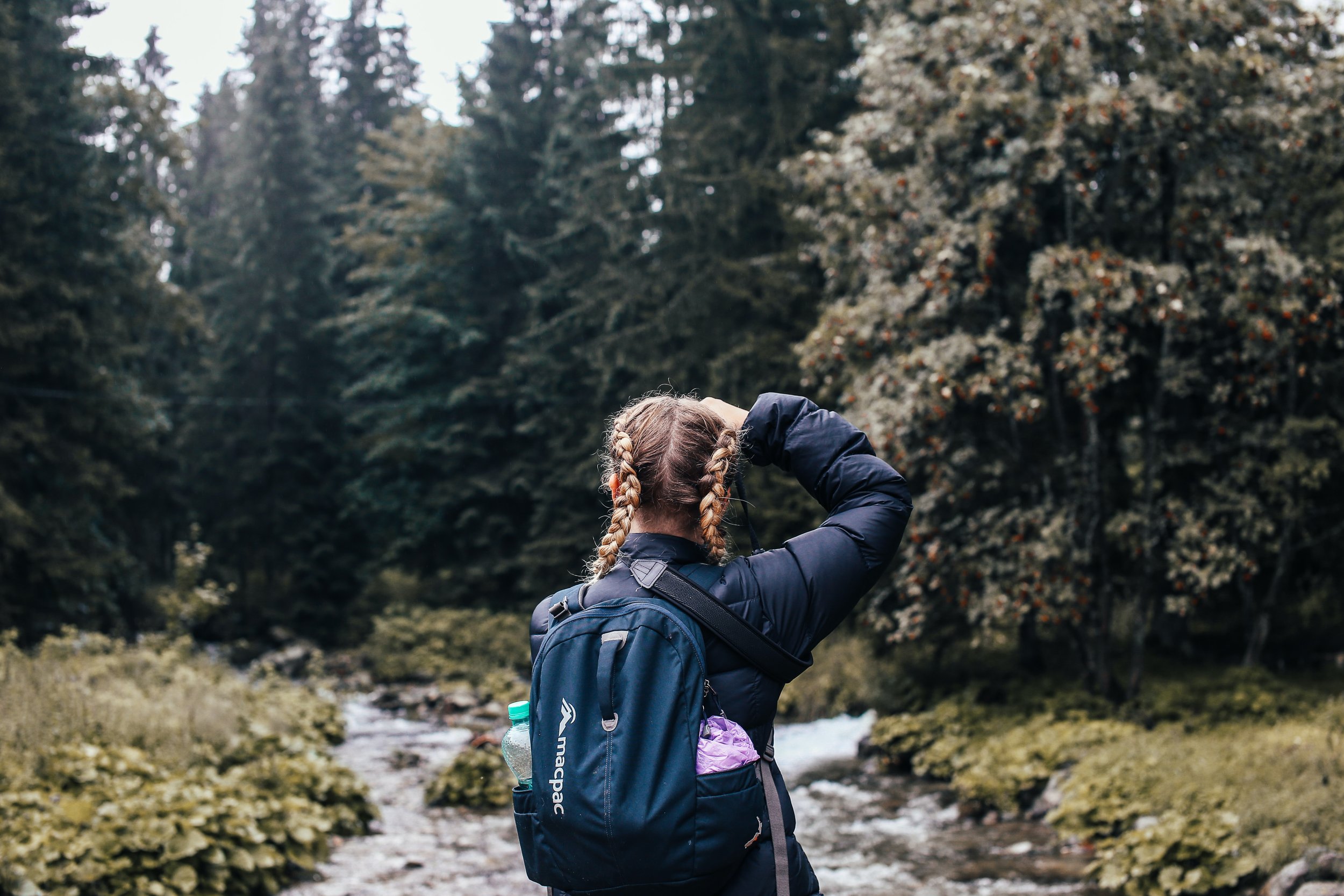10 Tips for Hiking Alone Safely as a Woman
As a woman, solo hiking can be very intimidating. Out in nature alone with nothing but yourself, your thoughts, and among strangers. There’s a beauty to it, though. Hiking alone gives you a moment to reflect, go at your own pace, and build self-confidence in nature. And of course, women are taught that being out alone is unsafe, but it’s risky for anyone to do anything alone. If you have the right tools and follow some best practices, you can start to feel more comfortable as a solo hiker. If you’re looking for ways to hike alone safely as a woman, these ten tips will help you get started!
1. Pack Your 10 Hiking Essentials
These ten essentials will be there for you when you need them the most – rain or shine, day or night. Make sure you keep the following with you in your hiking backpack:
Navigation (compass, map, or GPS device)
Headlamp (extra batteries)
Sun Protection (sunscreen, UPF clothing, and sunglasses)
First-Aid
Knife (or multi-tool)
Shelter (emergency bivy)
Fire (lighter and matches)
Extra Food
Extra Water
Extra Clothes
Always check that items are up-to-date before heading out. Are your headlamp’s batteries dead? Are you almost out of sunscreen? It may be time for a Target run!
Trail Tip: Build or purchase a first-aid kit for day hikes and one for longer trips.
2. Know Your Limits
Who doesn’t love pushing their boundaries a little every now and then? It makes you feel invincible when you crush your goals. But one thing to keep in mind when hiking alone is to avoid pushing your body too hard. Maybe it’s not a good idea to do a 20-mile hike if you’ve only done 3 miles max. Overextending your body can lead to a possible injury. Build your way up to 20 miles. Maybe the next time you go out, you do 4 miles. Then the next time you see you can do 6. By the time you know it, you're building strength and confidence while solo hiking.
3. Research Trails Ahead of Time
Use apps or websites like AllTrails, Facebook, or Reddit groups to read about people’s experiences and descriptions of the trails you want to hike. These resources will let you know if you’ll need to cross over creeks, walk on rocky terrain, have limited shade on the trail, or go high in elevation. And other helpful information like if there are limited water sources or restrooms. Ask yourself what you are and are not prepared to do when hiking alone, and plan around that.
4. Check the Weather Forecast
The weather can change instantly, so make sure you bring the proper attire – such as a raincoat. Always check the weather before you leave for your hikes, so you know what to pack. Believe it or not, UV rays still make it through the clouds on those overcast days, so keep that bottle of sunscreen tucked away in your hiking backpack.
Trail Tip: In the summer, plan your hikes earlier in the morning to beat the heat. Hiking on trails with no shade and direct sunlight in 100+ degree weather is not fun. Please don’t do that to yourself!
5. Safety Tools for Extra Protection
Bring safety tools that you’re comfortable using. A knife, pepper spray, and whistle are pretty standard things to bring along on a hike. Place these items in easy to reach places for when you need them. For example, use a carabiner to clip the pepper spray on one of your backpack straps. Follow Nicole Snell on Instagram for some great self-defense tips!
Whistle Communication Signals
Buy an inexpensive whistle on Amazon, or take a look at your backpack. Some hiking packs have a hidden whistle buckle. On your solo hike, it’s good to know some essential whistle communication signals.
One blast = “Where are you?” (Searcher(s))
Two blasts = “I’m fine.”
Three blasts = “I need help!” (Victim)
6. Share Your Plans with Someone You Trust
Before you leave, text a friend or family member to let them know where you’re going, what time you plan to get to the trail, and when you plan to leave. It’s also best practice to leave a note in your car (like your glovebox) with your contact details, the trails you plan to walk, the time you plan to get back, and emergency contact information.
Download Hiking Emergency Contact Sheet >
Make a copy of this template that you can print out and place in your car. Or, to save the trees, you can laminate one sheet and use a dry erase marker to update it every time you go out on the trail!
Do not share that you are going out alone publicly on social media pre-hike. When you get back from your hike safe and sound, then you can share your solo hiking adventure! You never know who is following along on social media, and it’s best not to let people know that you’re about to be somewhere by yourself.
7. Don’t Forget Extra Food + Snacks
The breakfast taco you ate before your hike isn’t going to fuel your body on the trail for long. Use a calorie calculator to determine how many calories you should eat on your hikes. Always bring energizing snacks like trail mix or granola bars that you can access instantly. For drinks, try getting an insulated water bottle with you to keep water cold for the hot days, and carry Pedialyte packs to replenish your body when it’s feeling dehydrated.
8. Wear a Piece of Bright Clothing
Carry a neon orange bandana or anything with a bright color on you. To get straight to it – this is in case a search and rescue team needs to find you. Colorful items that stand out against the colors of nature will make it easier for people to see you. It’s just something to keep in mind when going to more remote places.
Trail Tip: You can also use a bandana to cool yourself off by putting water on it and placing it on your neck on hot days.
9. Take an Extra Battery Pack for Your Cell Phone
If you use your phone for maps, photos, videos, and texting, your battery can start to deplete before you even start your hike. It’s best to carry a battery pack with a cord to hook your phone up, so it stays fully juiced up. The last thing you want is a dead phone in the middle of your hike.
10. Invest in a GPS Communicator
If you feel like you are ready to journey out alone, especially in places where you’d lose signal, investing in a GPS communicator can give you and your loved one’s peace of mind. It also lets you send your exact location to them. The Garmin InReach Mini is perfect for solo hikes, and it allows you to text custom messages or send preset messages to those you want to check in with. It is subscription-based, so look into what plan will work for you based on how often you go hiking.
Final Thoughts
Solo hiking can make you feel like you’re superhuman. We should not fear being out in nature alone; we should embrace it. Sometimes friends aren’t available to go on hikes; should that stop you from going to see that mountain you’ve always wanted to see? That state park that you’ve been dying to go to? Absolutely not.
If you’re still feeling a little uneasy about going out by yourself, that’s okay! You can also build confidence by meeting other women in nature and hiking with them. By the time you know it, you’ll be flying solo on the trails.






